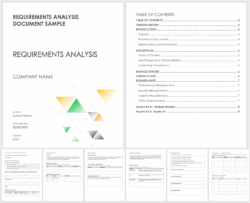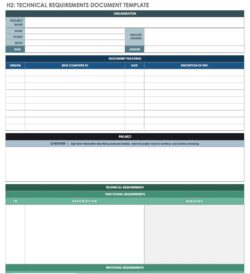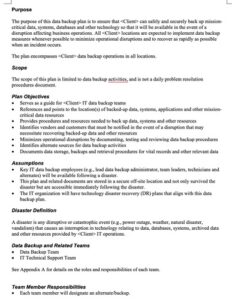Navigating the world of data privacy can feel like trying to solve a Rubik’s Cube blindfolded, especially when you’re responsible for ensuring your organization complies with the General Data Protection Regulation, or GDPR. The GDPR outlines strict rules about how personal data is collected, used, and stored. For data controllers, those who determine the purposes and means of processing personal data, maintaining meticulous documentation is not just good practice, it’s a legal requirement. Trying to figure out what needs to be documented and how to organize it all can quickly become overwhelming.
That’s where a GDPR documentation controller template comes in. Think of it as your data privacy compass, guiding you through the complex landscape of GDPR compliance. A well-structured template provides a framework for organizing all the necessary information, from data processing activities to security measures. It helps you demonstrate accountability, a core principle of the GDPR, by showcasing that you’ve taken steps to understand and address the risks associated with your data processing activities.
So, whether you’re a seasoned data protection officer or just starting to grapple with the GDPR, a robust template can be a lifesaver. It can simplify the process of mapping your data flows, documenting your lawful basis for processing, and tracking your compliance efforts. The goal is to demystify the documentation process and provide you with the tools you need to confidently demonstrate your commitment to data privacy.
Why is GDPR Documentation so Important?
The GDPR emphasizes accountability. This means organizations are not only required to comply with the GDPR principles, but they must also be able to demonstrate that compliance. Comprehensive documentation is the cornerstone of demonstrating accountability. It provides evidence to regulators, data subjects, and other stakeholders that your organization takes data privacy seriously and has implemented appropriate measures to protect personal data.
Beyond simply fulfilling a legal obligation, good documentation can streamline internal processes. When everyone understands the organization’s data processing activities, it becomes easier to identify potential risks, respond to data subject requests, and implement effective security measures. Clear and concise documentation also facilitates communication between different departments and promotes a culture of data privacy awareness throughout the organization.
Furthermore, consider the consequences of non-compliance. Failure to comply with the GDPR can result in hefty fines, reputational damage, and a loss of customer trust. Accurate and complete documentation can significantly reduce the risk of these negative outcomes by demonstrating that your organization has made a good-faith effort to comply with the regulations. In the event of a data breach or regulatory inquiry, documentation serves as your first line of defense, providing evidence of your compliance efforts.
Another key aspect of documentation is its role in data subject rights. The GDPR grants individuals a range of rights over their personal data, including the right to access, rectification, erasure, and portability. To effectively manage these rights, organizations need to have a clear understanding of what personal data they hold, where it is stored, and how it is processed. Documentation helps organizations quickly locate and manage data subject requests in a timely and efficient manner.
Finally, remember that the GDPR is not a one-time compliance exercise. It requires ongoing monitoring, review, and improvement of data protection practices. Documentation provides a valuable historical record of your compliance efforts, allowing you to track progress, identify areas for improvement, and adapt to evolving data privacy regulations. Think of it as a living document that reflects your organization’s commitment to data privacy over time.
Key Elements of a Robust GDPR Documentation Controller Template
A well-designed GDPR documentation controller template should cover all the essential elements required by the GDPR. This includes details about your organization’s data processing activities, the legal basis for processing, data security measures, and data transfer mechanisms. A solid template will also facilitate the recording of data protection impact assessments (DPIAs) where required and the management of data subject rights requests.
The template should start by clearly identifying the data controller, including contact information and the scope of their responsibilities. It should also outline the categories of personal data processed, the purposes of processing, and the recipients or categories of recipients to whom the data is disclosed. This information provides a comprehensive overview of the organization’s data processing activities.
Another crucial element is documenting the legal basis for processing personal data. The GDPR requires organizations to have a valid legal basis for each processing activity, such as consent, contract, legal obligation, or legitimate interests. The template should include a clear explanation of the legal basis relied upon for each processing activity, along with supporting documentation where applicable.
Furthermore, the template should address data security measures. This includes a description of the technical and organizational measures implemented to protect personal data from unauthorized access, use, or disclosure. The template should also outline procedures for data breach notification and response, including timelines and responsibilities.
Finally, the template should facilitate the management of data subject rights requests. This includes procedures for receiving, responding to, and documenting requests for access, rectification, erasure, or portability of personal data. The template should also outline the process for verifying the identity of data subjects and ensuring that their requests are handled in a timely and efficient manner. Using a GDPR documentation controller template helps streamline this essential area of compliance.
By meticulously documenting these key elements, your organization can demonstrate its commitment to data privacy and build trust with customers, employees, and other stakeholders. Remember, comprehensive documentation is not just a legal requirement; it’s a business imperative in the age of data protection.
The journey toward GDPR compliance might seem daunting, but with the right tools and resources, it can be manageable. By embracing a culture of documentation and continuous improvement, you can safeguard personal data, protect your organization’s reputation, and build lasting relationships with your stakeholders.
Ultimately, the goal is not just to comply with the letter of the law, but to embrace the spirit of data protection and make data privacy a core value within your organization. By doing so, you can create a more transparent, trustworthy, and responsible data ecosystem.



